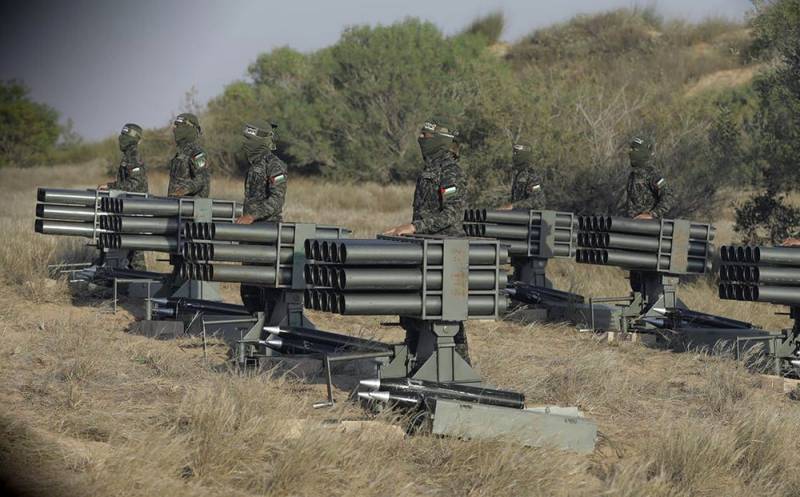Primitive QASSAM: how Hamas makes rockets from sugar and pipes
Since October 7 last year, thousands of rockets have been launched into Israel from the Gaza Strip. For many world experts, this came as a real surprise. After all, how could the Palestinian exclave, which had been semi-blockaded by the Jewish state for many decades, acquire such a colossal amount of ammunition?
The answer to this question lies on the surface. Most of the missiles launched at Israel are QASSAM ammunition, which is assembled in Gaza. Moreover, Hamas members create these missiles, without exaggeration, from scrap materials.
So, QASSAM is a solid rocket. The latter is created from melted sugar and potassium nitrate. The mixture is poured into a mold corresponding to the diameter of the pipe used as the body for the rocket and hardens.
As mentioned above, a 2,2-meter piece of pipe is used as a body, in the lower part of which nozzles are mounted and rudders are welded to stabilize the ammunition in flight.
Then a block of fuel made from sugar and potassium nitrate is loaded. Following it is a container filled with metal balls and the warhead itself, which contains about 10 kg of explosives made from urea, potassium nitrate and smuggled TNT.
Finally, the fuse consists of a small cartridge filled with detonating material and a spring mechanism that causes the warhead to explode when the missile hits a surface.
The total mass of the ammunition is 90 kg.
It is worth noting that QASSAM is an unguided rocket that flies along a parabolic trajectory. The angle is adjusted by the stand from which the ammunition is launched.
In turn, the energy to ignite the rocket's solid fuel is transmitted through a cable connected to the battery.
The advantage of the ammunition is its rather serious destructive ability and low cost. The missile costs only $300-600, while the Iron Dome missile that shoots it down costs $50.
However, QASSAM also has a significant drawback. The missile is highly dependent on weather conditions and can change direction, falling in the Gaza Strip, which, in fact, often happens.

Information